‘Dangerous and coercive’: ADF briefing notes reveal alarming China move
A trove of Defence briefing notes reveal China’s substantial arsenal and plans that could shut down our trade routes has sparked concerns. See why.
National
Don't miss out on the headlines from National. Followed categories will be added to My News.
China’s arsenal of 300 intercontinental ballistic missiles and lack of transparency on its regional military intentions has caused alarm within the Australian Defence Force.
But a trove of Defence briefing notes reveal it’s Beijing’s “dangerous and coercive” use of fishing boat militias that could trigger conflict and shut the sea that carries 83 per cent of our trade.
The hundreds of pages of notes, dated between November 2022 and March this year, were created as background for parliament’s defence and foreign committee and released under Freedom of Information.
The Federal Government has been at pains to declare it in the interest of both Australia and China to stabilise relations and China to exercise its power that reinforces rules based order.
But in internal analysis of China’s “expanding presence”, Defence also warns a lack of transparency in President Xi Jinping intensions remain a serious concern.

In particular, China’s behaviour around Taiwan and the South China Sea could be a trigger to misunderstandings, particularly as Defence signals it had no intention of paring back deployments.
“The PLA’s (People’s Liberation Army) expansion in size and operating areas means the ADF is operating in closer contact with the PLA more often. The ADF’s priority at all times is to conduct activities safely and professionally and in accordance with international law,” Defence said in its dossier.
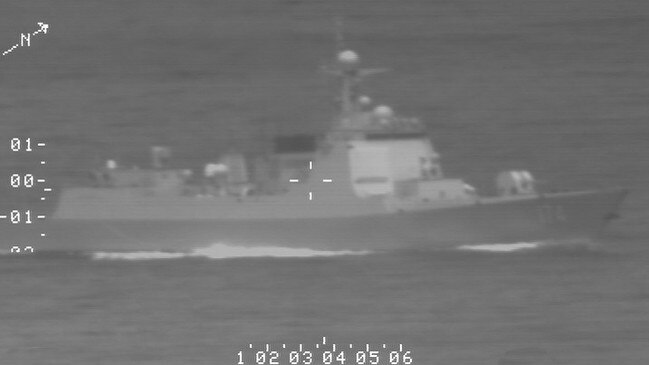
“Sometimes we do have concerns and have experienced unsafe and unprofessional behaviour by the PLA.
“We regularly raise our concerns with China about the militarisation of disputed features in the South China Sea through diplomatic channels. As well as actions to disrupt other countries’ resource exploitation activities and the dangerous and coercive use of coast guard vessels and so called ‘maritime militias’.”

The PLA’s backed armed fishing militia fleet plays a critical role in Beijing’s strategy to enforce sovereignty claims, in swarm tactics in the South China Sea and East China Sea.
“Our position on the South China Sea is consistent and clear. We continue to speak up – and act – in our national interest, to support a region which is open, secure and prosperous,” Defence said, adding in 2022 the ADF undertook numerous routine port visits, maritime surveillance flights and transits.
“These activities are always conducted in accordance with international law. We have a substantial interest in the stability of the South China Sea and the norms and laws that govern it. 83 per cent of Australian merchandise trade [by value] is carried by sea. Our operations support these freedoms and underpin prosperity by ensuring waterways are open for trade”
Overall, ADF noted the PLA’s build up.
“Defence closely monitors military capability developments in the region, including those of China. China continues to increase its military expenditure allowing the PLA to transition to a more modern, mobile and lethal force. China now has the largest navy in the world with a battle force of over 340 ships and submarines, and it now has approximately 300 intercontinental ballistic missiles.”
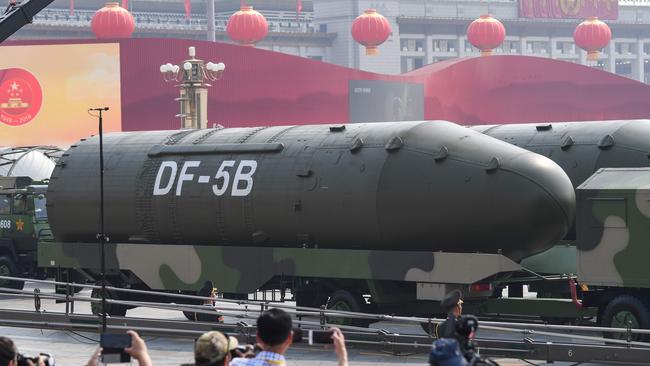
Under AUKUS, the Pacific could see how Australia was contributing to regional stability and “strategic equilibrium”.
“This is in contrast to the lack of transparency around the military build-up of other
countries in our regions, such as China,” it said.
On the question of Taiwan, Defence reaffirmed its One China policy recognition. It stated it would be irresponsible to speculate on a hypothetical of whether Australia would join the US in a conflict over Taiwan.
But it added: “ANZUS obliges Australia and the US to consult each other where either party believes its territorial integrity, political independence or security is threatened.”
INNER THOUGHTS OF DEFENCE ON:
NATIONAL SECURITY OUTLOOK
We face the most challenging strategic circumstances of the post-war period. As a region we know the sharp edge of strategic competition. We have experienced our situation becoming more dangerous and volatile.
The Indo-Pacific – Australia’s region – is now a centre of strategic competition. Military modernisation is occurring at an unprecedented rate with limited transparency and assurance. Capabilities are rapidly advancing and their reach expanding. The risk of conflict is growing. We rely on international trade for our economic prosperity and on multiple seabed cables to connect us to the global trading system. The closing or blocking of sea lanes would have a critical impact on our economy and security. Submarines are a vital component of our nation’s defences as they place the greatest question of doubt in an adversary’s mind.
REGIONAL SECURITY
As a three-ocean nation dependent on seaborne international trade, Australia requires cutting-edge naval capabilities. We rely on international trade for our economic prosperity and on multiple seabed cables to connect us to the global trading system. The closing or blocking of sea lanes would have a critical impact on our economy and security, disrupting our ability to receive essential goods such as fuel and medicines and our ability to export to international markets. Nuclear-powered submarines are the best option to meet Australia’s strategic and defence capability requirements over the coming decades. Nuclear-powered submarines have superior characteristics of stealth, speed, manoeuvrability, survivability and endurance when compared to conventional submarines.
PACIFIC
Is Australia militarising the region? No, Australia’s defence co-operation with the Pacific is longstanding. Australia’s position is that security is the shared responsibility of the Pacific family of which we are a member. Does Australia want to integrate security forces in the Pacific? We respect the right of every Pacific nation to make sovereign decisions about engagement with other countries. Pacific Islands Forum Leaders reaffirmed in July the importance of a ‘Pacific family first’ approach to peace and security. The Pacific family has proven time and again its commitment and responsiveness to Pacific security needs.
SPIES
We know Defence and defence industry, information, people, assets and capabilities are the targets of foreign intelligence services collection in Australia and overseas. Foreign Intelligence Services are increasingly aggressive in seeking access to privileged and classified information. Defence recently conducted an inquiry …. presented to (Defence Minister Richard Marles) on 14 December 2022. (classified – redacted) Defence is working with the counter foreign interference taskforce in ASIO to support their investigation and prevent any compromise of defence information. The inquiry highlighted the need for the strengthening of internal Defence training and employment security related policies, expanded outreach with the veteran community to ensure they understand their enduring obligations … all recommendations to be implemented in 2023.
AUKUS II (Japan)
There are two pillars of the AUKUS partnership – nuclear-powered submarines and advanced capabilities. The six key areas chosen for Pillar II; undersea warfare, electronic warfare, hypersonic and counter-hypersonic, advanced cyber, quantum technologies and artificial intelligence, are those that will make the most significant contribution to future war fighting.
Japanese involvement in AUKUS? Australia, the UK and the US are focused on entrenching a sustainable trilateral partnership that meets the strategic needs of our three nations. In time, we will identify areas of discrete co-operation, where working together with like-minded partner/s would deliver shared strategic capability benefits.
We will continue to grow defence industry co-operation with Japan bilaterally through trilateral mechanisms with the US and, when ready, through AUKUS Pillar II as well … (Mr Marles) noted his intent to grow defence industry integration with Japan bilaterally and, when ready, via AUKUS Advanced Capabilities.
THE UNITED STATES
Co-developing agile logistics at nominated airfields to support more sustained, responsive and resilient rotations of US aircraft and strengthening US land presence by expanding locations for US Army and Marine Corps rotations to enable exercises and activities and further opportunities for regional engagement. Importantly, we also agreed to invite Japan to increasingly participate in Force Posture Initiatives in Australia. What munitions will the US preposition and when as part of force posture co-operation? Are Force Posture Initiatives in Australia a response to China? Australia-US force posture co-operation is not focused on any one country; it is focused on maintaining an open, inclusive and resilient region.
FRANCE
Australia and France’s relationship has moved forward since the Attack-class submarine program cancellation announcement. Defence has developed three broad proposals to be further explored: Enhanced Reciprocal Access, Exercises, and Operations – which will see increased support of each other’s deployments, the conduct of more joint maritime activities and better reciprocal access to defence facilities. We wish to deepen our operational co-operation with France, including to enhance access to defence facilities. We have a number of legal frameworks in place to facilitate this. We are exploring with France whether there are any gaps, including through inviting French planners to visit Australia in 2023 to tour facilities, explore access requirements, and confirm practical arrangements.
WEAPONS
TANKS
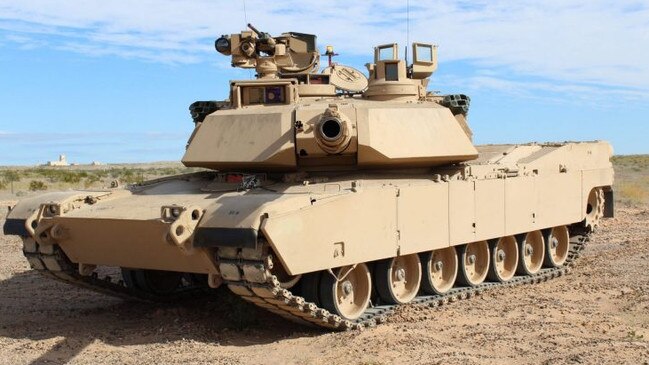
While Australia has not been required to fight against a near peer adversary since the Vietnam War, it would not be prudent to assume this will continue. The ADF must be prepared to fight and win in a high-intensity land conflict and the Combined Arms Fighting System – with the tank at its core – is an essential capability Army contributes to the Joint Force. The upgrade to the M1A2 SEPv3 will close this capability gap. The Main Battle Tank (MBT) will provide protection from drones through the integration of a capability that counters them. Ukraine has demonstrated the centrality of heavy armoured vehicles including the MBTs in conducting counter-offensive operations to remove Russian forces.
LITTORAL WARFARE
Army’s proposed future Littoral Manoeuvre Vessels to be delivered from 2026 will further enable independent projection of armoured vehicles within our region. Jungle and urban environments constrict the employment of many systems – like drones – which have been suggested as substitutes for the direct support that armour provides to infantry. The recent experiences of the Armed Forces of the Philippines in clearing insurgents from Marawi demonstrates that without tanks, operations in dense urban environments are more protracted and result in far higher casualties among soldiers and civilians.
HELICOPTERS
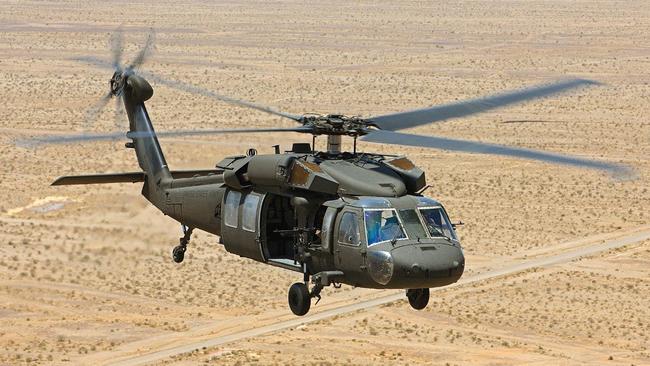
The MRH90 has been unable to meet Australia’s need for a reliable and affordable aviation capability. The decision to replace the MRH90 with the UH-60M Black Hawk was announced on January 18, 2023. The initial platforms will be delivered from Q3 2023. The Tiger Armed Reconnaissance Helicopter (ARH) reliability, support and supply chain performance remains problematic, reducing aircraft serviceability and availability. Delivery of the ARH replacement, the proven AH64E Apache Attack Helicopter, is progressing well and remains on track … for the first deliveries in 2025.
NAVY
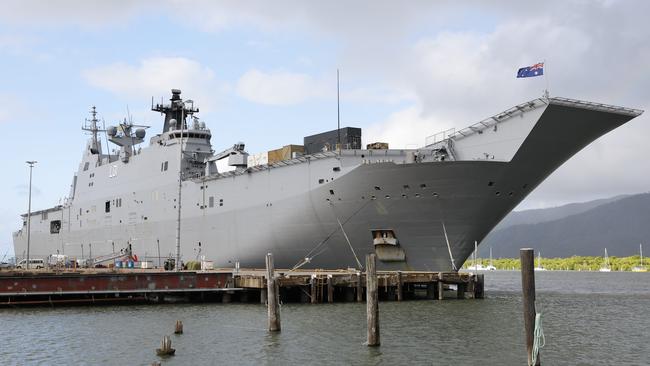
Navy’s three amphibious ships (HMA Ships Adelaide, Canberra, and Choules) are undergoing an upgrade to their combat, sensor, aviation, communications and navigation systems. Navy’s MH-60R helicopter fleet will be upgraded to maintain commonality and interoperability with the US Navy. A significant combat system upgrade to our Hobart class to enable them to employ next generation missiles; Installing additional phased array radars and a technologically advanced communications suite to enhance the lethality of the Anzac class frigates. Fitting the Collins class submarines with Tomahawk land attack cruise missiles is also under consideration.
SOVEREIGN CAPABILITY
The government is committed to building secure, sustainable, continuous Australian naval shipbuilding and sustainment capability. This capability will take decades to realise, and it may be necessary to build or partially build some ships overseas, until our sovereign industry has sufficient capacity to meet our needs.
EAST COAST BASE
Planning is underway to complete the feasibility assessment by Quarter 3 2023 for an East Coast naval base with Port of Newcastle; Port of Brisbane (on or around Fisherman Island); and Port Kembla assessed for feasibility.
The three identified locations were selected based on a range of basing criteria, including: access to exercise operating areas; proximity to industrial infrastructure; and proximity to significant population centres to support personnel and recruitment. Construction of dedicated submarine facilities at Garden Island Defence Precinct (Sydney Harbour) would limit future expansion options for the major surface fleet and therefore is not considered viable.
COLLINS CLASS SUBMARINES
Defence assesses the risks of extending the life of the Collins class to be significant, but manageable. This includes risks associated with the pressure hull and other critical systems. This assessment has not changed since first pass. The core work package to extend the life of each Collins class is planned to be inserted during scheduled full-cycle dockings commencing from mid-2026. Defence has adopted a risk-based approach to the Collins Life Of Type Extension (LOTE) project. As the boats age, age-related risks to submarine availability will increase.
SHIPBUILDING WORKFORCE
Every state and territory stands to benefit from the naval shipbuilding and sustainment enterprise. The principal strategic risk facing the enterprise relates to growing the suitably qualified and experienced national workforce. It is projected that by 2030 more than 15,000 Australian workers will be employed nationally across naval shipbuilding/sustainment.
HAWKEI
On November 11, 2022, Thales Australia advised Defence it had identified a new issue impacting the brakes on the Hawkei Protected Mobility Vehicle-Light. This issue does not appear to be related to the original braking issue involving the ABS.
Ukraine expressed interest in a fleet of 30 Hawkei to support their conflict with Russia.
Gifting of the Hawkei vehicle at this stage would adversely impact the introduction of the capability to the ADF.
More Coverage
Originally published as ‘Dangerous and coercive’: ADF briefing notes reveal alarming China move




